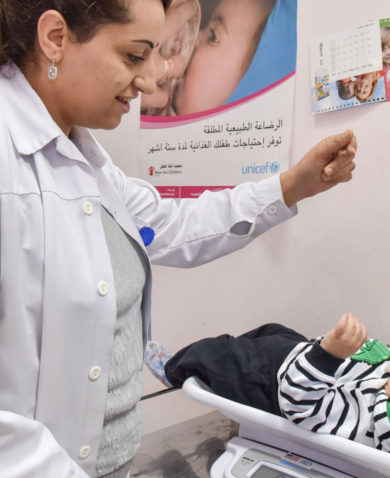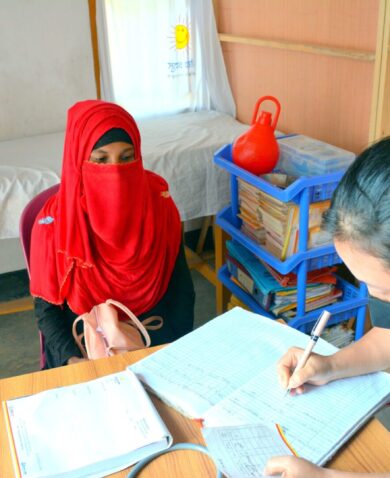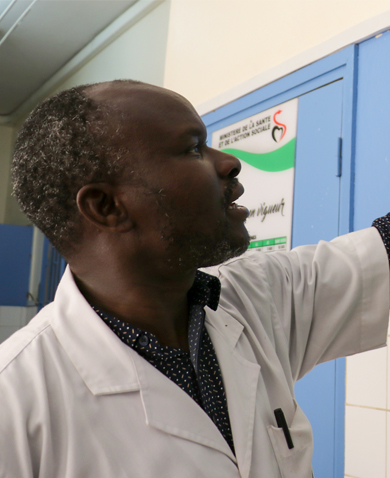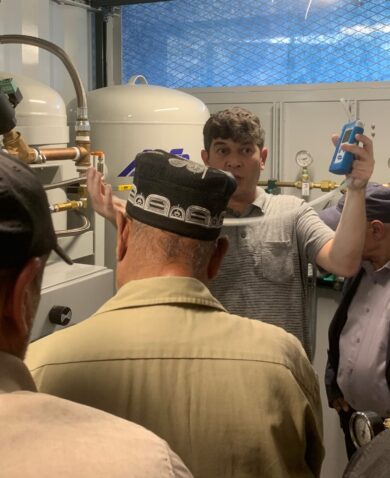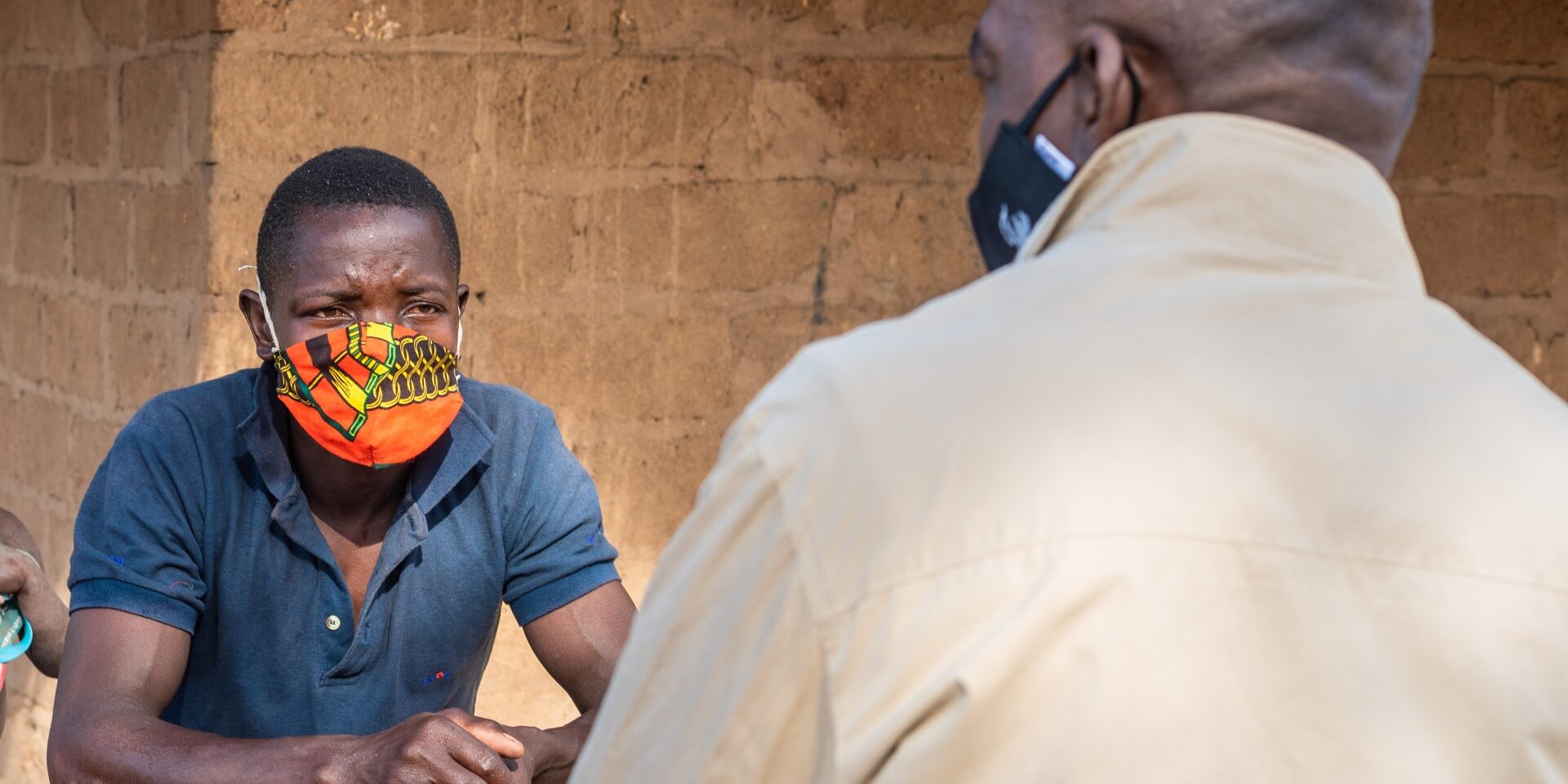
Assessing the Community-Based Workforce Helps Optimize HIV Programs
December 21, 2020 | 3 Minute ReadDespite COVID-19 challenges, the global health workforce must maintain health services, including those for HIV. The community-based workforce can make a critical difference.
This post was adapted from a post that originally appeared on the USAID HRH2030 program’s website.
The COVID-19 pandemic has exacerbated human resources for health challenges around the world and heightened the need for a well-prepared, well-supported workforce to not only respond to the pandemic but to also maintain essential services including those for HIV. Community-based services have been critical to maintaining HIV services during this time, and the cadres providing this support, loosely grouped under the title “community based workers” (CBWs), span the health and social sectors and include health worker cadres formally recognized by national governments as well as non-formal workers and volunteers.
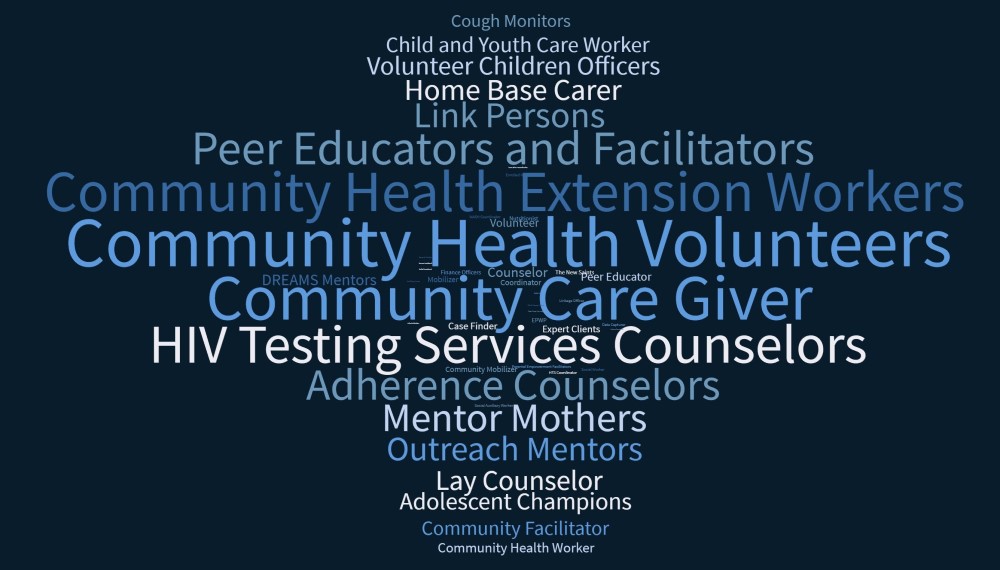 Despite the growing prevalence of community-based HIV interventions, there has been little comprehensive analysis across countries of the entirety of CBWs’ support for HIV services and people living with HIV. Prioritizing the collection and analysis of data on the typology of workers, where they are working, and what they are doing is critical to advance recognition of and impact of their work and optimize investments in this workforce. The USAID Human Resources for Health in 2030 (HRH2030) program, with PEPFAR support, conducted assessments in Kenya and South Africa between July and December 2018 to advance understanding of the composition, workload, and functions performed by CBWs supporting HIV programs. We share several key findings as the global community celebrates World AIDS Day this week and underscore the need for more assessment of the community-based HIV workforce, in order to advance and sustain their contribution to the achievement of UNAIDS 95-95-95 goals.
Despite the growing prevalence of community-based HIV interventions, there has been little comprehensive analysis across countries of the entirety of CBWs’ support for HIV services and people living with HIV. Prioritizing the collection and analysis of data on the typology of workers, where they are working, and what they are doing is critical to advance recognition of and impact of their work and optimize investments in this workforce. The USAID Human Resources for Health in 2030 (HRH2030) program, with PEPFAR support, conducted assessments in Kenya and South Africa between July and December 2018 to advance understanding of the composition, workload, and functions performed by CBWs supporting HIV programs. We share several key findings as the global community celebrates World AIDS Day this week and underscore the need for more assessment of the community-based HIV workforce, in order to advance and sustain their contribution to the achievement of UNAIDS 95-95-95 goals.
Opportunities exist to further streamline cadres and their responsibilities to optimize impact. The assessments revealed a large diversity in types and roles of CBWs. There was substantial variation across geography regarding the types and numbers of CBWs engaged and their scopes of work, roles, and responsibilities, which links to challenges in harmonization and consolidation of this group as an optimized workforce. Ensuring that CBWs are included in data collection exercises and in human resource information systems will help keep track of the number and kinds of CBWs working across regions of a country and inform how to further align roles and responsibilities, strengthen coordination across CBWs to better serve client needs and prevent duplicate efforts.
Consider integration of workload and time standards as the basis of performance benchmarks. The assessments demonstrated that CBWs work variable hours on tasks including client consultations, household visits, facility tasks, record keeping, including time required for travel and work-related meetings. Time spent on record keeping represented a considerable proportion of CBW time across cadres – as much as 34 percent. It’s important that more focus be placed on understanding time requirements associated with expected tasks, including through use of time and motion methodologies, in order to define a more standardized and appropriate workload. These workload standards can be utilized as performance standards to improve management and oversight of CBW performance and impact.
Increase attention to obtaining CBW feedback on support received to do their job. Evidence suggests that human resource management practices strengthen motivation and job satisfaction. Unfortunately, obtaining feedback from CBWs on the support they receive to do their jobs is not routinely integrated into assessment of supervision or performance management of CBWs. This can provide greater insight into strengthening these processes and systems that are critical to advancing the role of CBWs.
Assess how training is building the capacity of CBWs to perform key HIV services. The assessments highlighted the diversity of methodologies and standards being used to train CBWs. This further emphasizes the need to harmonize training content and ensure training is prioritized to meet the most critical skill gaps amongst CBWs.
Regular assessments like these and increased systematic use of program data further builds awareness of CBWs as an essential part of the HIV workforce. As the HIV service delivery landscape is changing, and as these changes are accelerating from innovations and adaptations due to the COVID-19 pandemic, there is a more urgent need to consider how CBWs fit within that landscape to meet HIV goals and sustain epidemic control. Assessing the availability, roles, and performance of CBWs provides important insights into their contribution to achieving the 95-95-95 targets and where efficiencies in programs supporting CBWs could be gained. Additionally, assessment is important in order to identify the system requirements needed to be able to leverage CBWs even more rapidly and effectively for future pandemic responses.
*Banner image caption: Calton Abudo Muagito, a malaria mobilizer, during a house visit. All photos by Alcy Media, Mozambique IMaP
Posts on the blog represent the views of the authors and do not necessarily represent the views of Chemonics.



